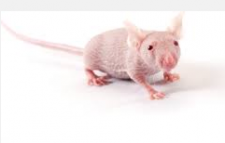 In today s Why didn t I think of that? feature, a simple, but elegant solution that could partially eliminate the guessing game: Which chemotherapy drugs are better to treat a given cancer?
In today s Why didn t I think of that? feature, a simple, but elegant solution that could partially eliminate the guessing game: Which chemotherapy drugs are better to treat a given cancer?
While some chemotherapy regimens are well-established to treat a certain type of cancer, in some ways, cancer chemotherapy is still a guessing game.
ACSH s Dr. Josh Bloom explains, Until recently, most chemotherapy has been based on the location of the primary tumor. Now genetic profiles are starting to be used to treat a cancer type, rather than its origin. A very good example of this is herceptin an antibody that is useful against certain types of breast cancer, but not against others.
Some breast cancer types are called HER2-positive, meaning that the cells have a genetic defect that causes them to make too much of a receptor called HER2/neu. This receptor then turns on a cell signaling process that results in the production of too much of a growth factor called EGF (epidermal growth factor), which causes rapid proliferation of tumor cells. Thus, the genetic profile of the breast tumor is used to determine the best treatment.
But what about cancers that do not (yet) have a genetic target? This is when patients can be subjected to trial by fire an empirical approach where chemotherapy cocktails may or may not work. This can result in needless suffering, and the opportunity for the cancer to progress since it is being treated with something that doesn t work.
In a sense, chemo patients can be considered to be lab rats. A novel approach to getting around this involves not a rat, but its smaller cousin a mouse. But not just any mouse will do.
The typical animal model for use in oncology drug discovery is a mouse. A particular tumor is injected under the skin of the mouse, and this provides a rough idea whether a compound has potential to stop the cancer cells from growing. But in ordinary mice, any implanted tumor will be recognized by the animal s immune system, which will then attack the foreign cells. To get around this, several varieties of mice have been developed to have little or no immune systems. When a small piece of a tumor is implanted under the skin, it will grow. Compounds (potential drugs) that might stop (or even eliminate) the implanted tumor are then tested in the mice. This is the basis for most oncology research.
A variety of this method seems to be useful for providing guidance to establish the best chemo regimen for patients. It also involves immune-compromised mice. Except in this case, a piece of a patient s own tumor is removed and implanted in test subject mice. Once the tumor grows, different chemo regimens can be tested in the mice rather than the patients. This is called a mouse avatar, and is a relatively new discovery.
The method is not perfect. For example, it takes several months for the tumor to grow to the point where different chemo cocktails can be tested. Also, the mouse model does not take into account the immune system of the patient. It is also expensive, and not covered by insurance.
Nonetheless, early results are promising. At a recent talk at the San Antonio Breast Cancer Symposium, Alana Welm, Ph.D., a cancer researcher at the Oklahoma Medical Research Foundation said, "I do see promise, but it's very time-consuming, it's very expensive. For the average patient, standard care is going to be the way to go.
Yet, a 70-patient study determined that there was a good correlation between response in the mice and the humans bearing the same tumor. This was especially predictive in one instance when the chemo regimen did not help the mouse, it also did not help the patient.
ACSH s Dr. Gil Ross had this comment: While this method is still merely a glimmer on the horizon of personalized medicine, it is such an elegant concept that studies of this type will become much more commonplace and involve larger numbers of patients and mice. The seemingly-unavoidable obstacle are imposing: the time it takes to grow tumors in immunocompromised mice, the time to observe effects of various drug regimens, the expense all onerous. Yet, with the passage of time, meaning possibly decades, this hyper-personalized approach to dealing with cancers, even those which have spread and would otherwise be a death sentence, will I believe prove to be a major advance.


